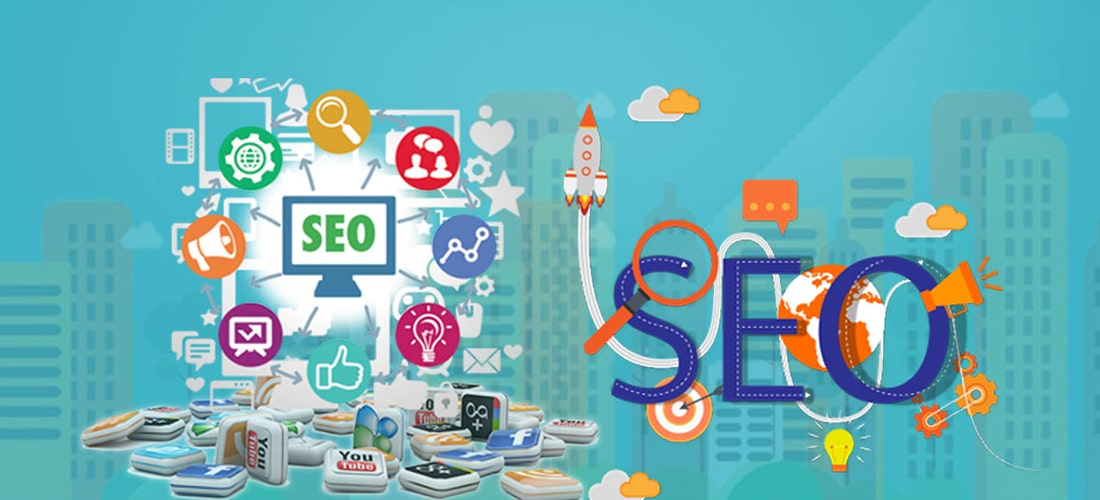Commercial real estate (CRE) investing offers significant opportunities for wealth creation, portfolio diversification, and passive income generation. However, securing the right financing is often the key to unlocking these opportunities. With the commercial real estate market evolving rapidly, particularly in dynamic regions like California, investors need to understand the full spectrum of financing options available in 2025. From traditional bank loans to innovative private lending solutions, this comprehensive guide explores the various commercial real estate financing options, their benefits, and how companies like MOR Financial stand out as top providers in the industry.
Understanding Commercial Real Estate Financing
Commercial real estate financing refers to the various methods investors use to fund the purchase, development, or management of income-producing properties such as office buildings, retail centers, warehouses, multifamily housing, and specialty properties like assisted living facilities or houses of worship. Unlike residential real estate, CRE financing often involves higher loan amounts, more complex underwriting, and a focus on the property’s income-generating potential.
The right financing option depends on factors such as the investor’s goals, the property type, the timeline for funding, and the investor’s financial profile. Below, we explore the primary financing options available in 2025, with insights into their advantages, drawbacks, and ideal use cases.
1. Traditional Bank Loans
Traditional bank loans remain a staple for many CRE investors due to their competitive interest rates and long-term repayment structures. These loans are typically offered by banks, credit unions, or other financial institutions and are ideal for well-established investors with strong credit profiles.
Key Features:
- Interest Rates: 4.5%–7% (depending on creditworthiness and market conditions).
- Loan Terms: 5–30 years, often with fixed or variable rates.
- Loan-to-Value (LTV): Up to 80% of the property’s appraised value.
- Repayment: Amortizing payments with principal and interest.
- Requirements: Extensive documentation, including tax returns, financial statements, and a detailed business plan.
Pros:
- Lower interest rates compared to alternative financing.
- Longer repayment terms provide predictable cash flow.
- Suitable for stable, long-term investments like multifamily or retail properties.
Cons:
- Lengthy approval process (30–90 days).
- Strict credit and income requirements.
- Limited flexibility for unique or distressed properties.
Best For:
Investors with strong credit, substantial cash reserves, and projects that don’t require rapid funding.
2. SBA Loans (7a and 504 Programs)
The U.S. Small Business Administration (SBA) offers two key programs for CRE financing: the SBA 7(a) loan and the SBA 504 loan. These programs are designed to support small businesses and entrepreneurs purchasing or refinancing commercial properties.
Key Features:
- SBA 7(a): Up to $5 million for general business purposes, including CRE purchases. Terms up to 25 years for real estate.
- SBA 504: Focused on fixed-asset purchases (e.g., real estate or equipment), with loans up to $5.5 million and terms up to 25 years.
- Interest Rates: 6%–9% (variable or fixed).
- LTV: Up to 90% for qualified borrowers.
- Repayment: Monthly principal and interest payments.
Pros:
- High LTV ratios reduce upfront capital needs.
- Competitive rates and long terms.
- Ideal for owner-occupied commercial properties (e.g., offices or retail spaces).
Cons:
- Extensive paperwork and eligibility requirements.
- Approval can take 60–120 days.
- Not suitable for speculative or non-owner-occupied investments.
Best For:
Small business owners looking to purchase or refinance owner-occupied commercial properties.
3. Hard Money Loans
Hard money loans, also known as private money loans, are short-term, asset-based loans provided by private lenders like MOR Financial. These loans are particularly popular among investors who need fast funding or have projects that don’t meet traditional lending criteria.
Key Features (Based on MOR Financial’s Offerings):
- Property Types: Land, retail, industrial, warehouses, offices, multifamily, assisted living, houses of worship, and specialty properties.
- Loan Amount: Up to 65% of LTV for commercial properties.
- Term: 12–60 months.
- Interest Rates: 9.99%–12.99%.
- Fees: 1–3% origination fees.
- Repayment: Monthly interest-only payments.
Pros:
- Fast funding (as little as 5 days with MOR Financial).
- Flexible underwriting with minimal documentation.
- No prepayment penalties, allowing early payoff without extra costs.
- Suitable for distressed properties, renovations, or time-sensitive deals.
Cons:
- Higher interest rates compared to traditional loans.
- Shorter terms require clear exit strategies (e.g., sale or refinance).
- Lower LTV ratios may require more upfront capital.
Best For:
Investors seeking quick capital for fix-and-flip projects, bridge financing, or non-traditional properties.
Why Choose MOR Financial?
MOR Financial stands out as a top private money lender in California, offering tailored hard money loans for commercial properties. Established in 2006, MOR Financial has funded over $550 million in loans, with a streamlined process that emphasizes speed, flexibility, and transparency. Their common-sense underwriting requires minimal documentation, and their competitive rates (starting at 9.99%) make them a go-to choice for investors tackling commercial real estate deals in California’s fast-paced market. Visit morfinancial.com to learn more or get pre-approved.
4. Bridge Loans
Bridge loans provide short-term financing to “bridge” the gap between immediate capital needs and long-term financing or property sales. These loans are ideal for investors looking to acquire or refinance a property quickly while awaiting permanent financing.
Key Features (Based on MOR Financial’s Offerings):
- Property Types: Land, single-family residences (SFR), condos, townhouses, 2–4 units.
- Loan Amount: Up to 70% of LTV.
- Term: 12 months.
- Interest Rates: 9.99%–12.99%.
- Fees: 1–3%.
- Repayment: Monthly interest-only payments.
Pros:
- Rapid approval and funding (often within days).
- Flexible terms for transitional projects.
- Ideal for stabilizing properties before refinancing.
Cons:
- Higher costs due to elevated interest rates.
- Short-term nature requires a clear exit strategy.
Best For:
Investors needing temporary financing for acquisitions, renovations, or lease-up periods.
5. Construction Loans
Construction loans are designed to fund the development or significant renovation of commercial properties. These loans typically cover land acquisition, construction costs, and other development expenses.
Key Features (Based on MOR Financial’s Offerings):
- Property Types: SFR, condos, townhouses, 2–4 units.
- Loan Amount: Up to 50% of LTV.
- Term: 12–24 months.
- Interest Rates: 9.99%–12.99%.
- Fees: 1–3%.
- Repayment: Monthly interest-only payments.
Pros:
- Funds large-scale development projects.
- Flexible draw schedules align with construction milestones.
- Supports ground-up construction or major renovations.
Cons:
- Lower LTV ratios require significant equity.
- Higher risk due to construction uncertainties.
- Requires detailed project plans and budgets.
Best For:
Developers building or renovating commercial properties with a clear construction timeline.
6. CMBS Loans (Commercial Mortgage-Backed Securities)
CMBS loans are pooled mortgages securitized and sold to investors, offering a unique financing option for large-scale commercial properties. These loans are typically originated by conduit lenders and are ideal for stabilized properties with strong cash flow.
Key Features:
- Property Types: Multifamily, retail, office, industrial.
- Loan Amount: $2 million and up.
- Term: 5–10 years.
- Interest Rates: 5%–8%.
- LTV: Up to 75%.
- Repayment: Amortizing payments, often with a balloon payment at maturity.
Pros:
- Competitive rates for large loans.
- Non-recourse options reduce personal liability.
- Suitable for institutional-grade properties.
Cons:
- Complex underwriting and prepayment penalties.
- Not ideal for smaller or non-stabilized properties.
- Longer approval times (30–60 days).
Best For:
Institutional investors or property owners with high-value, income-producing assets.
7. Mezzanine Financing
Mezzanine financing is a hybrid of debt and equity, providing additional capital by taking a subordinate position to the primary mortgage. It’s often used to fill funding gaps in large CRE deals.
Key Features:
- Loan Amount: Varies, typically 10%–20% of the capital stack.
- Term: 1–5 years.
- Interest Rates: 10%–15%.
- Repayment: Interest-only or deferred payments.
- Security: Secured by equity in the property or ownership entity.
Pros:
- Increases leverage for large projects.
- Flexible terms for high-net-worth investors.
- Can bridge funding gaps without diluting ownership significantly.
Cons:
- Higher costs due to elevated risk for lenders.
- Complex deal structures.
- Requires strong property cash flow.
Best For:
Experienced investors seeking to maximize leverage on large-scale CRE projects.
Choosing the Right Financing Option
Selecting the best CRE financing option depends on several factors:
- Project Type: Fix-and-flip or construction projects may benefit from hard money or bridge loans, while stabilized properties suit traditional or CMBS loans.
- Timeline: Time-sensitive deals require fast lenders like MOR Financial, while long-term investments can leverage bank or SBA loans.
- Financial Profile: Investors with strong credit and cash flow may qualify for traditional loans, while those with unique projects or weaker credit may prefer private lenders.
- Property Type: Specialty properties (e.g., assisted living or houses of worship) often require flexible lenders like MOR Financial.
Why MOR Financial Stands Out
Among the top private money lenders in California, MOR Financial excels in providing fast, flexible, and investor-focused financing solutions. With over 18 years of experience and $550 million in funded loans, MOR Financial offers a range of products tailored to commercial real estate investors, including hard money, bridge, and construction loans. Their streamlined underwriting process, competitive rates starting at 9.99%, and ability to fund in as little as 5 days make them a preferred choice for investors navigating California’s competitive market.
MOR Financial’s commitment to transparency and client success sets them apart. Their online tools, such as Fix-N-Flip Profitability and Hard Money Loan Payment calculators, empower investors to plan projects with confidence. Whether you’re acquiring a retail center, developing a multifamily property, or financing a specialty project, MOR Financial’s expertise and agility ensure you have the capital you need, when you need it. Visit morfinancial.com to explore their offerings and get pre-approved today.
Conclusion
Commercial real estate financing in 2025 offers a diverse array of options to suit various investment strategies and property types. From traditional bank loans to innovative private lending solutions, investors have the tools to capitalize on opportunities in a dynamic market. By partnering with a trusted lender like MOR Financial, investors can access fast, flexible capital to fuel their commercial real estate ventures. Understanding the nuances of each financing option and aligning them with your investment goals is the key to success in this competitive landscape.
Ready to take the next step? Visit morfinancial.com to learn how MOR Financial can help you secure the funding you need for your commercial real estate projects.




